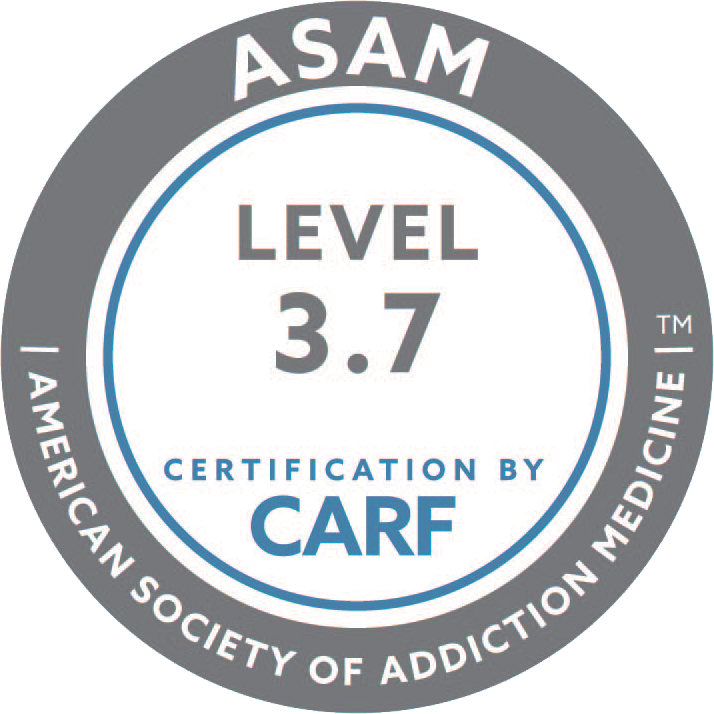Patient-centered care is an approach to healthcare that prioritizes the needs and preferences of the patient. It involves actively involving patients in their own care and treatment decisions, and treating them with respect, dignity, and empathy. In primary care settings, patient-centered care is particularly important as it forms the foundation of a strong patient-provider relationship and leads to improved health outcomes.
Key Takeaways
- Patient-centered care prioritizes the needs and preferences of the patient in primary care.
- Effective communication is a key element of patient-centered care, allowing for shared decision-making and improved outcomes.
- Empowering patients in their treatment journey involves providing education and resources to help them make informed decisions.
- Implementing patient-centered care can face barriers such as time constraints and lack of training, but strategies such as team-based care and technology can help overcome these obstacles.
- The future of primary care lies in continued efforts to prioritize patient-centered care, leading to improved patient satisfaction and outcomes.
Understanding the Importance of Patient-Centered Care
Patient-centered care has been shown to have numerous benefits for both patients and healthcare providers. Firstly, it leads to improved patient outcomes. When patients are actively involved in their own care, they are more likely to adhere to treatment plans and make positive lifestyle changes. This can result in better management of chronic conditions, reduced hospitalizations, and improved overall health.
In addition to improved outcomes, patient-centered care also leads to increased patient satisfaction. When patients feel heard, respected, and involved in their own care, they are more likely to have a positive experience with their healthcare provider. This can lead to increased trust and loyalty towards the provider, as well as improved patient-provider communication.
Furthermore, patient-centered care fosters better patient-provider relationships. By actively involving patients in their own care, providers can build trust and rapport with their patients. This can lead to improved communication, increased patient engagement, and ultimately better health outcomes.
Key Elements of Patient-Centered Care in Treatment
There are several key elements that are essential for providing patient-centered care in primary care settings. Firstly, respect for patient preferences and values is crucial. Providers should take the time to understand each patient’s unique needs and goals, and tailor treatment plans accordingly. This involves actively listening to patients’ concerns and involving them in decision-making processes.
Coordination and integration of care is another important element of patient-centered care. Primary care providers should work collaboratively with other healthcare professionals involved in a patient’s care, such as specialists and allied health professionals. This ensures that patients receive comprehensive and coordinated care, and reduces the risk of fragmented or duplicated services.
Information and education are also key elements of patient-centered care. Providers should provide patients with clear and understandable information about their condition, treatment options, and self-management strategies. This empowers patients to make informed decisions about their own care and take an active role in managing their health.
Lastly, emotional support is an essential element of patient-centered care. Providers should acknowledge and address the emotional needs of their patients, as well as their physical needs. This involves providing empathy, compassion, and support throughout the treatment journey.
The Role of Communication in Patient-Centered Care
| Metrics | Data |
|---|---|
| Patients who feel listened to by healthcare providers | 85% |
| Patients who report better health outcomes with patient-centered communication | 70% |
| Patients who are more likely to adhere to treatment plans with effective communication | 80% |
| Healthcare providers who report improved patient satisfaction with patient-centered communication | 90% |
| Healthcare providers who report improved patient outcomes with patient-centered communication | 75% |
Effective communication is at the heart of patient-centered care. It is essential for building trust, understanding patient preferences, and facilitating shared decision-making. There are several key communication skills that healthcare providers should employ to ensure patient-centered care.
Active listening is a fundamental communication skill that involves fully focusing on and understanding what the patient is saying. This includes not only listening to the words being spoken, but also paying attention to non-verbal cues and emotions. Active listening helps providers gain a deeper understanding of the patient’s concerns and needs, and allows for more effective communication.
Shared decision-making is another important aspect of patient-centered care. It involves involving patients in the decision-making process by providing them with information about their condition and treatment options, and allowing them to express their preferences and values. Shared decision-making empowers patients to take an active role in their own care and ensures that treatment plans align with their individual needs and goals.
Open and honest communication is also crucial for patient-centered care. Providers should be transparent with patients about their condition, treatment options, risks, and benefits. This helps build trust and fosters a collaborative relationship between the provider and patient.
Empowering Patients in their Treatment Journey
Empowering patients to take an active role in their own care is a key aspect of patient-centered care. There are several strategies that healthcare providers can employ to empower patients and support them in their treatment journey.
Encouraging patient involvement in decision-making is one such strategy. Providers should provide patients with information about their condition and treatment options, and involve them in the decision-making process. This helps patients feel more in control of their own care and increases their engagement and adherence to treatment plans.
Providing resources and support is another important strategy for empowering patients. This can include educational materials, self-management tools, and access to support groups or community resources. By equipping patients with the necessary resources and support, providers can help them better manage their own health and make informed decisions.
Fostering patient self-management is also crucial for empowering patients. Providers should encourage patients to take an active role in managing their own health, such as through healthy lifestyle choices, medication adherence, and regular monitoring of their condition. This helps patients develop self-efficacy and confidence in managing their own care.
Addressing Patient Preferences and Needs in Treatment
Patient-centered care involves addressing the unique preferences and needs of each individual patient. There are several strategies that healthcare providers can employ to ensure that care is tailored to each patient’s specific circumstances.
Cultural competence is an important aspect of patient-centered care. Providers should be aware of and sensitive to the cultural beliefs, values, and practices of their patients. This helps ensure that care is delivered in a culturally appropriate manner and respects the diversity of patients’ backgrounds.
Individualized care plans are another key strategy for addressing patient preferences and needs. Providers should work collaboratively with patients to develop personalized care plans that take into account their goals, preferences, and circumstances. This helps ensure that treatment plans are aligned with each patient’s unique needs and values.
Addressing social determinants of health is also crucial for patient-centered care. Providers should be aware of the social and economic factors that can impact a patient’s health, such as access to healthcare, housing, education, and employment. By addressing these social determinants of health, providers can help improve health outcomes and reduce health disparities.
The Benefits of Patient-Centered Care in Primary Care
Patient-centered care has numerous benefits for both patients and healthcare providers in primary care settings. Firstly, it leads to improved patient outcomes. When patients are actively involved in their own care and treatment decisions, they are more likely to adhere to treatment plans and make positive lifestyle changes. This can result in better management of chronic conditions, reduced hospitalizations, and improved overall health.
In addition to improved outcomes, patient-centered care also leads to increased patient satisfaction. When patients feel heard, respected, and involved in their own care, they are more likely to have a positive experience with their healthcare provider. This can lead to increased trust and loyalty towards the provider, as well as improved patient-provider communication.
Furthermore, patient-centered care fosters better patient-provider relationships. By actively involving patients in their own care, providers can build trust and rapport with their patients. This can lead to improved communication, increased patient engagement, and ultimately better health outcomes.
Barriers to Implementing Patient-Centered Care in Primary Care
While patient-centered care is widely recognized as an important approach to healthcare, there are several barriers that can hinder its implementation in primary care settings.
Time constraints are a major barrier to providing patient-centered care. Primary care providers often have limited time with each patient due to high patient volumes and administrative demands. This can make it challenging to engage in active listening, shared decision-making, and thorough patient education.
Lack of training and education is another barrier to implementing patient-centered care. Many healthcare providers have not received formal training on communication skills or shared decision-making. This can make it difficult for providers to effectively engage patients in their own care and make informed decisions.
Resistance to change is also a common barrier to implementing patient-centered care. Healthcare systems and providers may be resistant to adopting new approaches or changing established practices. This can hinder the implementation of patient-centered care and prevent providers from fully embracing a patient-centered approach.
Strategies for Overcoming Barriers to Patient-Centered Care
While there are barriers to implementing patient-centered care in primary care settings, there are also strategies that can help overcome these barriers.
Provider education and training is a key strategy for overcoming barriers to patient-centered care. Healthcare providers should receive formal training on communication skills, shared decision-making, and cultural competence. This can help providers develop the necessary skills and knowledge to effectively engage patients in their own care.
Workflow redesign is another important strategy for overcoming barriers to patient-centered care. Healthcare systems should prioritize patient-centered care by redesigning workflows to allow for more time with each patient. This can involve scheduling longer appointment times, implementing team-based care models, and streamlining administrative tasks.
Patient and family engagement is also crucial for overcoming barriers to patient-centered care. Providers should actively involve patients and their families in the design and delivery of healthcare services. This can include seeking feedback, conducting patient satisfaction surveys, and involving patients in quality improvement initiatives.
The Future of Patient-Centered Care in Primary Care
Patient-centered care is the future of healthcare, particularly in primary care settings. It is an approach that prioritizes the needs and preferences of the patient, and actively involves them in their own care and treatment decisions. Patient-centered care has been shown to lead to improved patient outcomes, increased patient satisfaction, and better patient-provider relationships.
Healthcare providers have a responsibility to prioritize patient-centered care and ensure that it is integrated into their practice. This involves actively listening to patients, involving them in decision-making processes, providing information and education, and offering emotional support. By prioritizing patient-centered care, healthcare providers can improve health outcomes, enhance patient satisfaction, and reduce healthcare costs.
Dr. Blair Steel is a licensed clinical psychologist working in the field for twelve years. She went to college in New York City before moving to Southern California and completing her graduate work. She has worked in various roles in treatment, including being a therapist, group facilitator, working in administration, and writing curriculum. Dr. Blair Steel is passionate about addiction and individual and family therapy and continues to love her work in both private practice and treatment centers.










